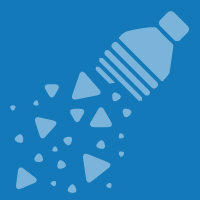Topic Menu
► Topic MenuTopic Editors

2. Guangxi Collaborative Innovation Center for Water Pollution Control and Water Safety in Karst Area, Guilin University of Technology, Guilin 541004, China


The Challenges and Future Trends in Anthropogenic and Natural Pollution Control Engineering

Image courtesy of ©Dr. Chenyang Zhang - McGill University
Topic Information
Dear Colleagues,
In the face of escalating global climate change and the urgent need to achieve the United Nation’s Global Sustainable Development Goals (SDGs), the imperative for effective pollution control engineering has never been more pressing. The proliferation of various environmental pollutants, including natural pollutants from diverse sources, and the emergence of new contaminants underscore the complexity of the challenge. These pollutants interact dynamically with diverse environmental media, altering their toxicity, migration patterns, and transformation pathways, and posing multifaceted risks to the ecosystems and human health.
To address these challenges comprehensively, a concerted effort is required to advance environmental pollutant removal technologies. Conventional physical and chemical treatments must be augmented by cutting-edge approaches like nanotechnology, photocatalysis, and electrochemical remediation, offering more efficient and sustainable solutions. Furthermore, harnessing the potential of bioremediation and phytoremediation techniques can facilitate the degradation or sequestration of pollutants, contributing to environmental cleanup efforts.
However, effective pollution control extends beyond technological interventions alone. Integrating ecological protection and environmental restoration strategies is essential to mitigate the long-term impacts of pollution on biodiversity, ecosystem services, and natural habitats. This necessitates holistic approaches that consider not only pollutant removal but also habitat restoration, biodiversity conservation, and ecosystem resilience enhancement.
This topic seeks to delve into the intricate interplay between anthropic and natural pollutants, exploring the latest research findings, innovative technologies, and emerging trends in pollution control engineering. By fostering interdisciplinary collaboration and knowledge exchange, it aims to catalyze transformative solutions that safeguard the environment, promote sustainable development, and ensure the well-being of present and future generations.
We welcome all studies considering the monitoring of water/soil air quality and ecological status of each sphere, including but not limited to the following: Agrochemicals; Environments; Water; Toxics; Soil Systems; Microplastics; Microorganisms; Sustainability.
Dr. Chenyang Zhang
Dr. Fujing Pan
Dr. Xiaoyu Gao
Prof. Dr. Weiqi Fu
Dr. Anxu Sheng
Dr. Zhiqiang Kong
Topic Editors
Dr. Lei He
Dr. Sining Zhong
Dr. Jie Chen
Co-Topic Editors
Keywords
- pollution control engineering
- anthropogenic pollutants
- natural pollutants
- heavy metal transport
- environmental remediation
- sustainable development goals
- ecological protection
- bioremediation
- technological innovation
- environmental restoration
Participating Journals
| Journal Name | Impact Factor | CiteScore | Launched Year | First Decision (median) | APC |
|---|---|---|---|---|---|

Agrochemicals
|
- | - | 2022 | 37.5 Days | CHF 1000 |

Environments
|
3.7 | 5.7 | 2014 | 19.2 Days | CHF 1800 |

Water
|
3.0 | 6.0 | 2009 | 19.1 Days | CHF 2600 |

Toxics
|
4.1 | 6.4 | 2013 | 18.1 Days | CHF 2600 |

Soil Systems
|
3.5 | 5.4 | 2017 | 31.6 Days | CHF 1800 |

Microplastics
|
5.1 | 6.8 | 2022 | 34.6 Days | CHF 1200 |

Microorganisms
|
4.2 | 7.7 | 2013 | 15.2 Days | CHF 2700 |

Sustainability
|
3.3 | 7.7 | 2009 | 19.3 Days | CHF 2400 |

Preprints.org is a multidisciplinary platform offering a preprint service designed to facilitate the early sharing of your research. It supports and empowers your research journey from the very beginning.
MDPI Topics is collaborating with Preprints.org and has established a direct connection between MDPI journals and the platform. Authors are encouraged to take advantage of this opportunity by posting their preprints at Preprints.org prior to publication:
- Share your research immediately: disseminate your ideas prior to publication and establish priority for your work.
- Safeguard your intellectual contribution: Protect your ideas with a time-stamped preprint that serves as proof of your research timeline.
- Boost visibility and impact: Increase the reach and influence of your research by making it accessible to a global audience.
- Gain early feedback: Receive valuable input and insights from peers before submitting to a journal.
- Ensure broad indexing: Web of Science (Preprint Citation Index), Google Scholar, Crossref, SHARE, PrePubMed, Scilit and Europe PMC.







